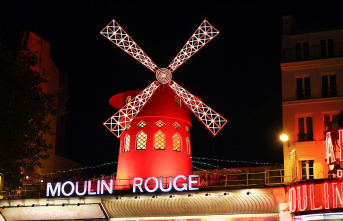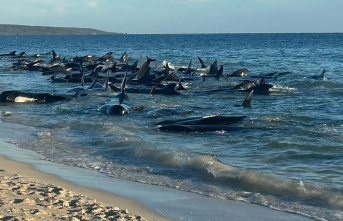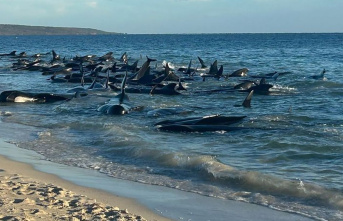After almost 26 days in space, a picture-perfect landing in the Pacific: the unmanned "Orion" capsule of NASA's "Artemis 1" moon mission is back on earth. She landed on Sunday evening (CET) as scheduled in the Pacific off the coast of Mexico. Live images from the US space agency Nasa showed how the capsule, slowed down by parachutes, touched down in the sea. The test mission is considered an important step in getting humans back on the moon.
"Splashdown," NASA wrote on Twitter - and welcomed the spacecraft "home." "Orion" traveled 1.4 million miles through space, flew around the moon and collected data. This will help NASA prepare to send astronauts to the moon on other Artemis missions. Visibly proud, Nasa boss Bill Nelson spoke of a "historic" day. Now, with new technology, we continue to explore new frontiers.
"We're one step closer to sending astronauts to the moon," congratulated US Vice President Kamala Harris on Twitter. The German astronaut Alexander Gerst also cheered: "A historic moment
Difficulty taking off, but landing according to plan
The "Artemis 1" mission was initially ill-fated after cost explosions and repeated launch postponements due to technical problems or stormy weather. On November 16, "Orion" finally took off with the "Space Launch System" rocket from the Cape Canaveral cosmodrome in the US state of Florida. All planned milestones could then be ticked off for four weeks: flyby the moon, swinging into orbit of the moon, swinging out of orbit of the moon, another flyby on the moon - and now then the landing.
It was considered the last major challenge of the test mission: "Orion" flew into the earth's atmosphere at around 40,000 kilometers per hour and was then slowed down to around 480 kilometers per hour. The heat shield of "Orion" has to withstand temperatures of around 2800 degrees Celsius.
The European Service Module (ESM) was separated around 40 minutes before landing. At the end of the mission, nothing was left of this drive and supply unit, which supplied the crew module with electricity, water and air, among other things - it burned up in the earth's atmosphere as planned.
New technique for entering the atmosphere
The return of the Orion capsule looked "like in a picture book", said Martin Tajmar, space systems expert at the TU Dresden, on Sunday evening of the German Press Agency. According to Tajmar, NASA tried some new techniques on landing.
This includes the so-called Skip Entry, which was used for the first time in a spaceship designed for humans. Roughly speaking, this procedure can be compared to jumping a stone over a body of water. "Orion" dipped into the earth's atmosphere to leave it again shortly after the impact. The capsule then dived again and then – slowed down by parachutes – watered down in the Pacific. This technique is intended to allow for a more precise landing.
Immediately after the splashdown in the Pacific, the capsule was surrounded by helicopters and boats. With the help of specialists and divers, "Orion" is now to be brought to the port of San Diego. From California it then goes back to Florida by truck overland, Nasa said.
Next goal: manning the mouth
With the "Artemis" program, named after the Greek goddess of the moon, US astronauts are to land on the moon again in the coming years, including for the first time a woman and a non-white person. The European space agency Esa and space agencies from several other countries are also involved in "Artemis".
A first manned flight ("Artemis 2") around the moon is to be followed by another manned flight including a moon landing ("Artemis 3"). NASA brought the last humans to the moon in 1972 with the "Apollo 17" mission. Overall, the United States was the only country to date to land twelve astronauts on the moon with the "Apollo" missions between 1969 and 1972.












